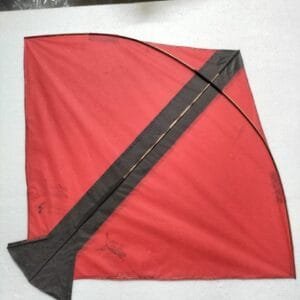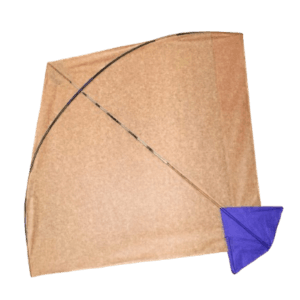Free Shipping Order
Delivery Moves So Quickly
Easy & Fast Returns
2 Days Free Return Policy
24/7 Customer Support
Online Help By Our Agents
100% Secure Payments
COD and Razorpay
No products in the cart.
₹1,999.00 Original price was: ₹1,999.00.₹999.00Current price is: ₹999.00.





Kite flying is an activity that has captivated the hearts and minds of people across various cultures for centuries. Historically, kites were not merely toys but held deep significance, often serving as instruments for scientific experimentation and cultural expression. The earliest records of kite usage date back to ancient China, where they were employed for military signaling and estimating distances. This early connection to utilitarian purposes gradually evolved into a celebration of art and leisure, as kites began to symbolize freedom and creativity across different regions.
In addition to its historical context, kite flying has significant cultural implications around the globe. In many countries, such as India, Japan, and Indonesia, kite festivals form an essential part of community identity and social cohesion. These festivals, characterized by vibrant displays of paper kites, unite families, friends, and neighbors in a colorful spectacle against the backdrop of blue skies. The communal experience fosters a sense of belonging while offering participants a platform to showcase their skills and artistry. As specialized paper kites gain popularity, these cultural events often evolve into competitive arenas where enthusiasts vie for the title of champion, enhancing the sportsmanship culture associated with kite flying.
Furthermore, in recent years, there has been a noticeable resurgence of interest in kite sports, driven by both technological advancements and a growing appreciation for traditional crafts. Modern enthusiasts are exploring various kite designs and materials, including professional paper kites, to enhance their flying experience. This renewed interest is not limited to seasoned fliers; more individuals are venturing into kite flying as a recreational pursuit, thereby enriching the landscape of this timeless activity. The simple act of launching a paper kite into the air transcends age, offering a shared joy that brings people together, making it a cherished aspect of cultural heritage and contemporary leisure.
Kite flying is not merely a fun outdoor activity; it is an art that has developed numerous types of kites, each with unique characteristics and purposes. Among the diverse range of kites, professional paper kites stand out due to their design, functionality, and the skill required to master them. These kites are often specifically built for competitive settings, featuring lightweight frames and elaborately designed sails that enhance their performance in the air.
One of the most popular categories of kites is the large-size paper kites. These kites come in various colors and designs, captivating the attention of onlookers. Their size not only adds a visual appeal but also allows them to catch more wind, making them an excellent choice for both experienced and novice fliers. Large paper kites can be flown for leisure, creating an impressive display during gatherings and festivals.
Another fascinating category is multicolour kites, which are crafted with vibrant materials to create stunning visual effects in the sky. These kites often feature intricate patterns and artistic designs, making them both beautiful and functional. Brands like Zen Impex have made substantial contributions to this segment, continuously innovating and providing exceptional quality products that cater to both casual fliers and professionals.
For competitive kite flying, the characteristics of kites become even more specific. Tournament-ready kites are designed for precision and agility, typically featuring a narrower wingspan and a tighter sail to allow for swift maneuvers. In contrast, casual flying kites are more forgiving, with broader sails that provide an easier and more enjoyable experience for beginners. Understanding the different types of paper kites available is essential for enthusiasts aspiring to enhance their flying experience, whether in tournaments or at casual outings.
Kite making is a meticulous craft that marries creativity and engineering, allowing artisans to transform simple materials into magnificent flying objects. The construction of professional kites involves a careful selection of materials, with paper, bamboo, and various synthetic fabrics often taking center stage. Each material brings unique properties that contribute to the kite’s overall performance and aesthetic appeal. For instance, lightweight paper is preferred for its ability to catch the wind with ease, while bamboo serves as a sturdy framework that provides the necessary structural integrity.
In addition to material choice, factors such as weight, balance, and aerodynamics are crucial in the kite design process. A well-balanced kite can achieve better stability and flight performance, ensuring it maneuvers gracefully in the sky. Designers often employ intricate calculations to determine the ideal weight distribution, taking into account the dimensions of the frame and the type of fabric used. The shape of the kite also plays a pivotal role; various designs, from delta kites to box kites, create different aerodynamic effects, enabling the kites to fly efficiently under varying wind conditions.
The purpose behind creating professional kites can vary widely, with tournaments and festivals providing specific motivations. Crafting kites for competitive events requires an understanding of flight dynamics and design finesse. Kites crafted for such occasions often feature vibrant colors and elaborate designs, pushing the boundaries of both artistry and functionality. Knowledge of local wind patterns and thermals can significantly influence the design process, as kite makers aim to optimize their creations for performance as well as beauty. Thus, the journey from design to flight embodies the intricate balance of art and science, captivating kite enthusiasts around the world.
Kite flying can be a highly rewarding activity when approached with the right techniques and understanding of conditions. For beginners and experienced flyers alike, mastering essential skills can significantly enhance the experience. First and foremost, consider the weather conditions. The ideal wind speed for flying kites typically ranges between 5 and 20 miles per hour. Gentle winds often make it easier to launch and control your kite, while strong winds can lead to difficulties and potential damage. Always check local weather forecasts and be mindful of sudden changes, as they can alter your flying conditions unexpectedly.
When preparing to launch your kite, it’s crucial to position yourself correctly. Start by holding the kite against the wind at a 45-degree angle. Gradually release the line while allowing the wind to lift the kite into the air. If you are flying a larger kite, enlisting the help of a friend can provide additional stability during the launch process. Once the kite is airborne, maintain a steady tension on the line to ensure consistent control. Be vigilant of how your kite behaves; if it begins to dive or spin, adjusting the line tension can rectify this.
Safety should always be a priority while flying. Remain aware of your surroundings, especially around people and power lines. Avoid flying in crowded areas where the kite could inadvertently pose a hazard. Moreover, be cautious of the materials used in your kite, as some may create sharp edges that can cause injuries. Lastly, common pitfalls include launching in extremely high winds or failing to secure your kite properly, both of which can lead to mishaps. By applying these tips, kite enthusiasts at every skill level can enjoy a safe and exhilarating experience in the sky.
Kite flying transcends being a mere pastime; it is a vibrant community activity that fosters friendships, cultural exchange, and competitiveness. Around the globe, kite enthusiasts gather at various tournaments and events that serve as a point of convergence for like-minded individuals who share a passion for the skies. These gatherings not only celebrate the art of kite flying but also create an atmosphere of camaraderie amongst participants and spectators alike.
One of the most notable events in the kite flying calendar is the annual international kite festival. These festivals often span several days and attract competitors from diverse backgrounds, showcasing their unique designs and flying techniques. For instance, the International Kite Festival held in Gujarat, India, is renowned for its colorful array of kites and the enthusiastic participation of local and international flyers. The event highlights not just the skill involved in kite building and flying but also the cultural significance of kites in Indian traditions.
In addition, organizations such as Cheel Kites and Paper Kite Patang play a pivotal role in solidifying the community aspect of kite flying. These companies actively engage with enthusiasts through sponsorships, workshops, and events that nurture the kite flying spirit. By bringing people together, they create opportunities for sharing knowledge about kite crafting and flying techniques, fostering a sense of belonging among participants.
Competitions, such as the annual World Kite Festival, encourage creativity and innovation, where participants are judged not only on their flying skills but also on the aesthetic appeal of their creations. These contests offer a platform for cultural exchange, as competitors often incorporate traditional designs and techniques from their respective regions. Through these interactions, kite flying becomes a medium for bridging cultural divides, emphasizing shared experiences and interests.

Delivery Moves So Quickly
2 Days Free Return Policy
Online Help By Our Agents
COD and Razorpay
Reviews
There are no reviews yet.